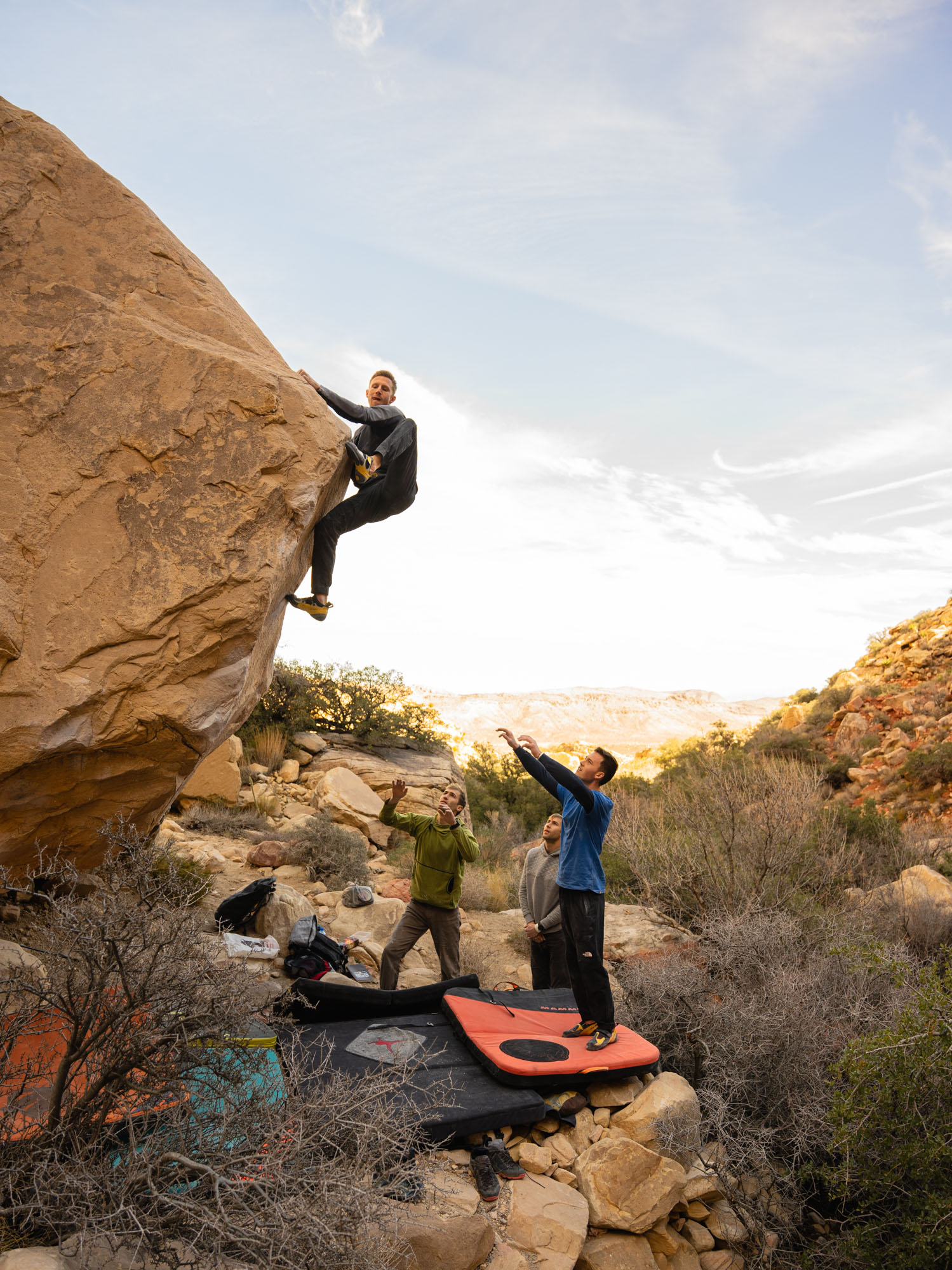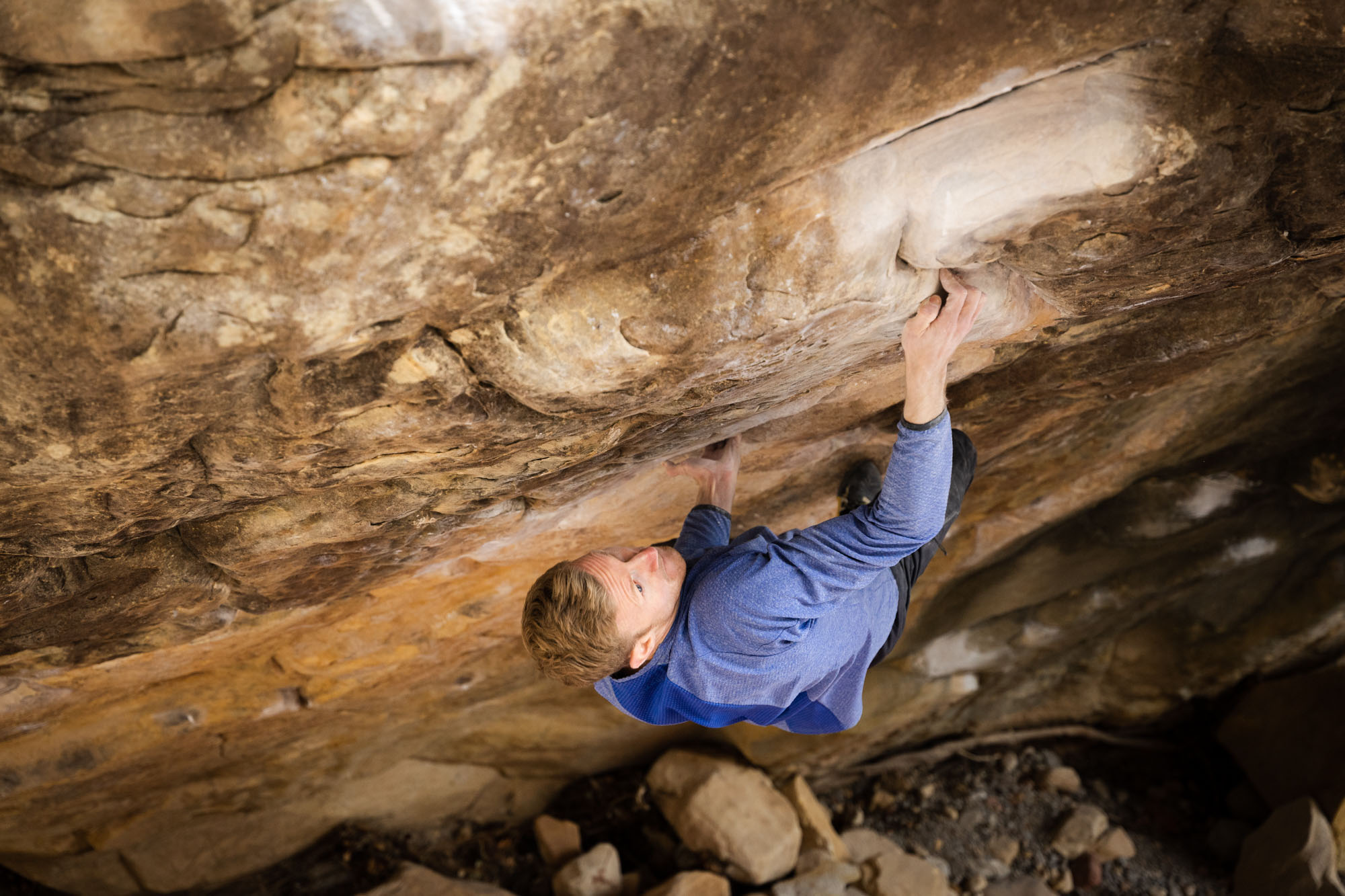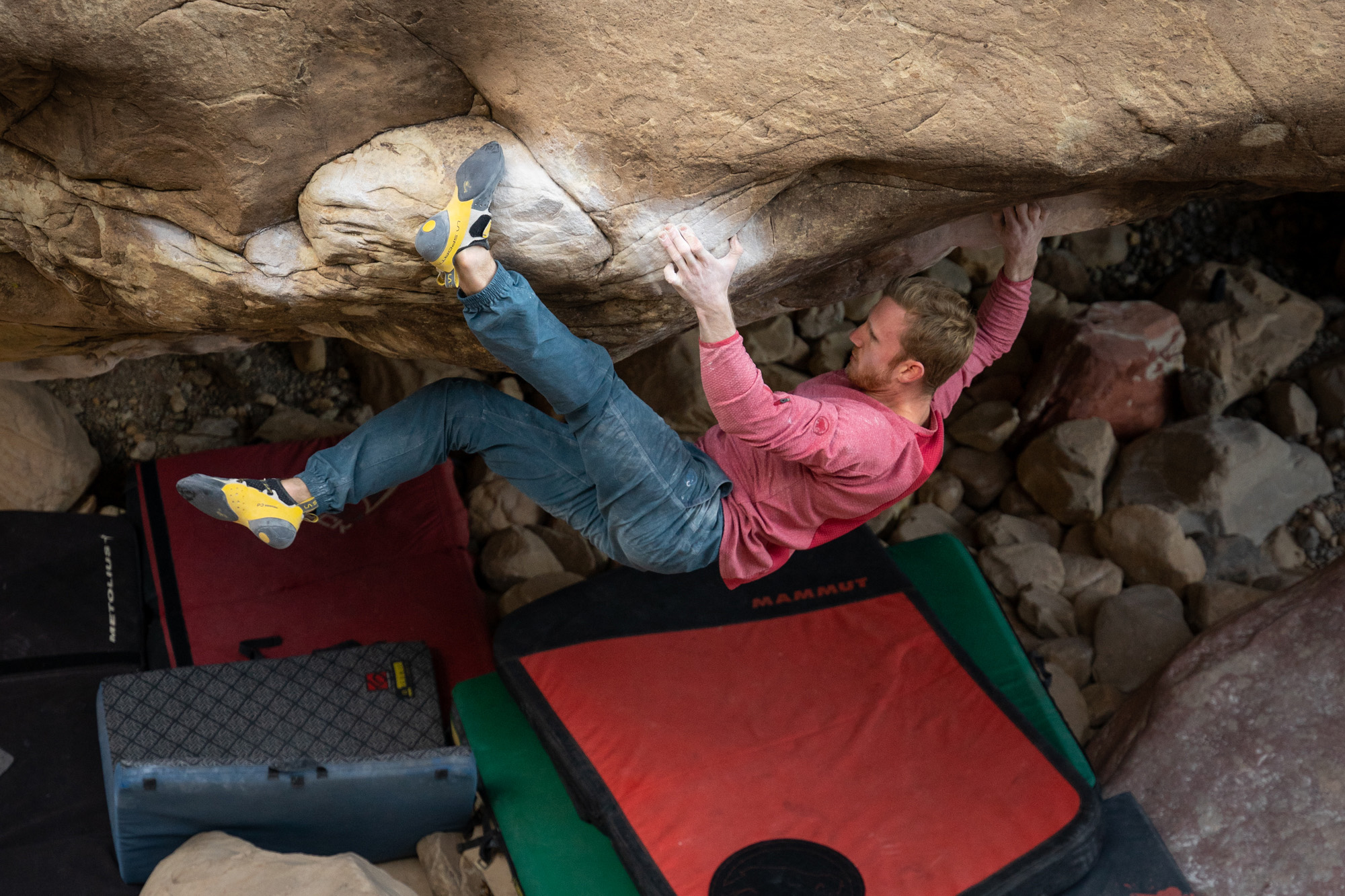Jakob - Newsletter #15, Red Rocks | Sleepwalker 8C+
After the winter break from competitions, lead climbing world champion Jakob Schubert is back, ready for the World Cup opener, and tells us just in time for the latest video release why his bouldering project 'Sleepwalker' near Las Vegas almost turned into a nightmare.
Your latest YT video shows you in an unusual situation - Jakob Schubert struggles for weeks with a single boulder. Do you win or lose in the end?
Definitely both! It was a last-minute decision to fly to the US at the end of January with two very good friends, Nicolai Uznik and Michael Piccolruaz. The destination was the Red Rocks near Las Vegas and a relatively difficult boulder. The video shows the process I went through on Sleepwalker, an 8C+ boulder. In terms of difficulty, it's the hardest boulder I've ever tried, and yet I thought I had a chance of doing it relatively quickly. In the video you can see the struggles, but also how great the atmosphere is when we boulder together.


You came home from that trip 'with no result' - in hindsight, would you approach the project the same way again?
I am still convinced that I would have been able to climb the boulder and that a few slightly different decisions would have changed the result. In such a process you always learn a lot about the boulder itself. On the first days it was much too cold and therefore much too dry, actually impossible to climb. We certainly invested too much physically and destroyed skin that I simply missed at the end. Going into a boulder like that with two cuts on your fingers is anything but ideal. One or two more days of rest and more skin for the better conditions towards the end of the trip - that would have been the better recipe.
For a fortnight, your whole focus was on one boulder. You set your mind on it and want to do it at all costs, even if it means coming home 'empty-handed' - is that doggedness or stubbornness?
In the past, I always enjoyed climbing many lead routes on my second or third attempt - difficult enough that I couldn't do them onsight or flash, but not so difficult that I had to try them forever. Sending as many of them as possible in one trip, that was my goal for a long time in bouldering, too.
Of course, it's cool when you're in the Rocklands in South Africa for the first time, you have all the classics in one pile, and you just go through and do a lot of bouldering that is just below your level. That also fascinates other people, when you can practically do everything in a very short time.
In the last few years, I have increasingly started to look for a very difficult project and work on it. Perfecto Mundo is a good example - it made me realize how much I'm learning about my own climbing on the rock. Everything has to be perfect when you go to the limit like that.
This approach is not necessarily more fun, but it helps if you want to improve. That's what makes it exciting for me.
In bouldering, I have done relatively little projecting so far, and Sleepwalker was my first trip from this other point of view. Certainly, it wasn't as much fun as if I had tried a different boulder every day. However, I came back with the feeling that I had learned a lot.
This time it actually didn't turn out well, normally I still get up there somehow and have this insane feeling of happiness. Now I've had to learn that you can't always get that and would therefore say that it was the right decision.

How do you explain this meticulous approach to outsiders? How does it look in your head when you are in such a project?
I still believe that 8C+ doesn't have to be my limit, it always depends a bit on the boulder and how much it suits me. With the Sleepwalker, I had this hope that I would succeed after a few days, but I quickly realized that I would have to invest more and that was a bit frustrating. After all, you have your ego in your luggage too. As a climber, you want to be good in every style, you want to have few weaknesses. On this trip, I and the whole team were shown a few deficits. Especially on the undercuts, I felt very lost at the beginning. In the evening after a session, I think a lot about what I can do better. In the beginning, it's a lot about finding the right variation for yourself. What can be the trick that works for me? Before I go to sleep, I go through the boulder several times in my head. On the day itself, it's all about timing everything very well, always concentrating fully on the attempt at hand and getting everything out of yourself in that go. After that, you need a break, not only physically, but especially mentally. You can only put yourself in beast mode a few times in a row.
In 2021 you did practically everything 'in passing', also downgraded many routes, were untouchable and now you start 2022 with a 'negative' result. Untypical for you. What do you learn from this?
Untypical situation - yes and no. It always depends a lot on where you spend your time. La Cappella, for example, has been extremely accommodating for me, Red Rocks with the Sleepwalker not quite so. Also, you're not equally fit in every phase, but it doesn't immediately eat away at your self-confidence. I feel very good again in training now and have concentrated on World Cup preparation, even though I have a lot of plans on the rock this year. What I certainly learned is that I'm nowhere near as experienced in projecting a boulder on the rock as I am in route climbing. Next time I will definitely have to approach it tactically better, in terms of rest days, attempts and mental preparation.


Next weekend the competition season starts - what do you take from the Red Rocks experience to the competition wall?
The weaknesses that were shown to all of us in the Red Rocks motivated us enormously for the training afterwards. I certainly put more into it than I might otherwise have done and worked harder on myself. It definitely helped me for the World Cup season, I feel very well prepared.
What can we expect from Jakob Schubert at the World Cup in Meiringen?
In bouldering it is always very difficult to predict. In the last few years, the first one or two World Cups were unfortunately not very successful for me, I never made it past the semi-finals. So, this year my goal is to get into the first World Cup well, reach the semi-finals and feel comfortable. The qualification is always the most difficult round for me, in the semi-finals the bouldering gets harder and I usually have an easier time; I have a much higher success rate from there to get into the final. So, for now, my full concentration is on the qualification. I am better prepared for technical bouldering and slabs than in the past and I am looking forward to the challenge.
Photocredit: Michael Piccolruaz